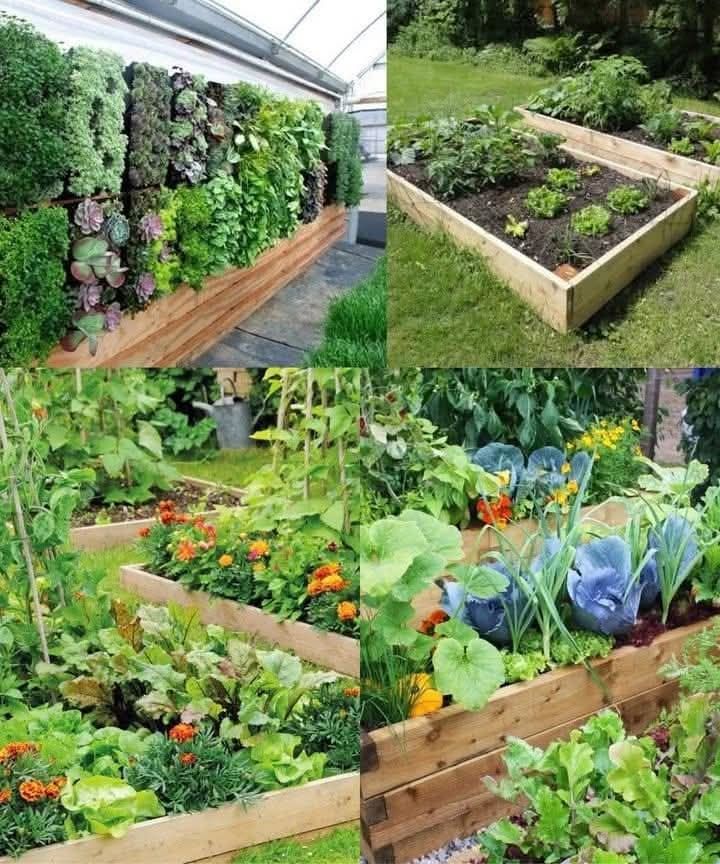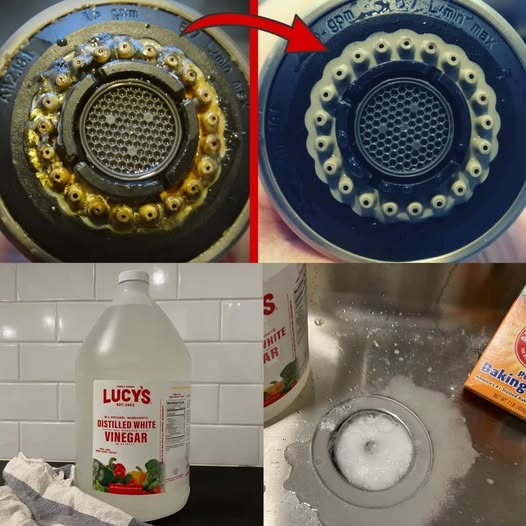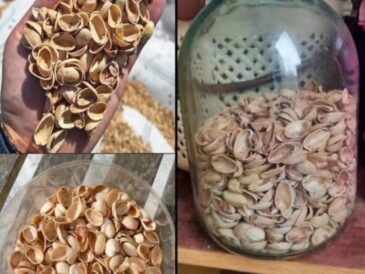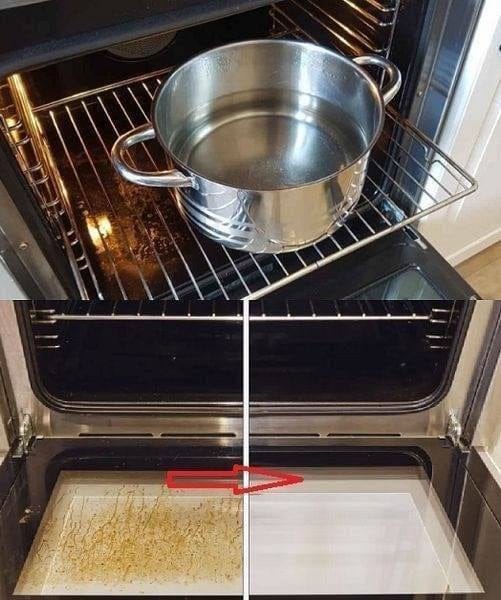Growing your own vegetables is a rewarding and sustainable way to enjoy fresh, healthy produce while connecting with nature. Whether you have a sprawling backyard or a small balcony, thoughtful planning and creative techniques can significantly enhance your vegetable garden’s productivity. Here are 12 innovative ideas to maximize your yields and make the most of your growing space.
1. Embrace Vertical Gardening
Vertical gardening is an excellent solution for small spaces or urban gardens where traditional garden beds may not be an option. Using trellises, wall planters, or hanging pots, you can grow climbing plants such as tomatoes, cucumbers, peas, and beans. These plants are naturally inclined to grow upwards, making vertical gardening a perfect fit for maximizing space.
This method not only saves horizontal space but also improves air circulation, which can help prevent diseases and pests that thrive in stagnant conditions. Furthermore, harvesting from vertical gardens is often easier and less physically demanding, as the plants are elevated to a comfortable height. Whether you’re using wooden frames or repurposing materials like old pallets, vertical gardening can significantly increase the amount of food you can grow without requiring additional square footage.
2. Use Raised Garden Beds
Raised garden beds are a great way to improve soil drainage, reduce weed growth, and make gardening easier on your back. When soil conditions are less than ideal in your yard, raised beds can help ensure your plants thrive by giving you better control over the soil quality. These beds also heat up faster in the spring, extending your growing season.
Raised beds are especially useful for growing root vegetables such as carrots, radishes, and beets, as the loose, well-drained soil encourages healthy root development. To maximize yields in raised beds, consider implementing the square-foot gardening method, which involves planting crops more intensively by spacing them carefully in a grid pattern. This method not only maximizes space but also reduces the chance for weed growth and soil erosion.
3. Succession Planting
Succession planting involves growing multiple crops in the same space throughout the growing season to ensure a continuous harvest. For instance, after harvesting early-season crops like lettuce or spinach, you can immediately plant beans, zucchini, or other summer vegetables in the same spot. This method optimizes garden space by allowing you to grow more food during the year.
This approach also helps reduce the potential for soil depletion, as different crops have varying nutrient needs. Succession planting can be planned based on the length of your growing season, and with careful timing, you can have fresh produce throughout the entire year, even if you have limited space.
4. Companion Planting
Companion planting involves pairing plants that benefit each other in various ways, whether by improving growth, deterring pests, or enhancing flavor. When plants are carefully selected to grow alongside one another, they can work synergistically, boosting the overall health of your garden. For example:
- Tomatoes and basil: Basil can help repel pests like mosquitoes and flies, and its aromatic oils may enhance the flavor of tomatoes.
- Carrots and onions: Onions can deter the carrot fly, a common pest, while carrots help to aerate the soil.
Companion planting not only improves plant health but can also help attract pollinators like bees, which can boost the productivity of your garden. Furthermore, it can reduce the need for chemical pesticides and encourage a more sustainable, organic approach to gardening.
5. Utilize Containers
Container gardening offers versatility and is ideal for small spaces such as balconies, patios, or even indoors. You can use pots, buckets, old tubs, or repurposed items to grow a wide variety of vegetables, including peppers, cherry tomatoes, and herbs. Containers are especially useful for crops that have specific soil or space requirements.
The key to successful container gardening is ensuring that your containers have good drainage and that they receive enough sunlight. You can easily move containers around to catch the best light or protect your plants from extreme weather conditions. Additionally, container gardening allows you to control the soil quality, which can be especially helpful in urban environments where soil quality might be poor.
6. Opt for High-Yield Crops
If you’re looking to maximize your garden’s productivity, focus on high-yield vegetables that are space-efficient and produce large quantities. Some vegetables, like zucchini, cherry tomatoes, and pole beans, are particularly well-known for their ability to produce abundant harvests, even in smaller spaces.
Zucchini, for instance, can often yield more than you can handle from just a few plants, and cherry tomatoes tend to have a high output when grown in optimal conditions. By focusing on crops that consistently produce a large quantity of food, you can make the most out of your growing space while ensuring a steady food supply throughout the season.
7. Install Drip Irrigation
Watering your garden is essential for healthy plant growth, but conventional watering methods often waste water due to evaporation or runoff. Drip irrigation systems deliver water directly to the plant roots, minimizing evaporation and ensuring that water is used efficiently. This targeted watering system also helps prevent diseases caused by wet foliage, as the water is focused on the root zone rather than splashing onto the leaves.
Installing a drip irrigation system in your garden can significantly reduce water waste and make watering easier, especially in hot, dry climates. Additionally, it can improve your plants’ overall health, as consistent moisture helps them thrive and reduces stress, which can lead to higher yields.
8. Mulch for Soil Health
Mulching is one of the simplest and most effective ways to improve soil health and protect your plants. Applying a layer of organic mulch such as straw, wood chips, or grass clippings around your plants helps retain soil moisture, suppress weeds, and regulate soil temperature. This creates a more stable environment for your plants, reducing the risk of soil erosion and the need for frequent watering.
Mulch also breaks down over time, adding valuable organic matter to your soil and improving its structure. This leads to better nutrient retention and promotes the growth of beneficial soil organisms, such as earthworms. As a result, mulching not only improves the health of your plants but also enhances the long-term fertility of your garden soil.
9. Intercropping
Intercropping is the practice of planting different crops together in the same space to make the most of your available area while also benefiting the plants. By choosing crops with complementary growth habits, you can optimize space and resources, as well as improve soil fertility.
For example, you might plant fast-growing crops like radishes between slower-growing crops like carrots, allowing the radishes to be harvested before the carrots need more space. You can also pair tall crops like corn with low-growing plants like squash or beans, which can spread across the ground, reducing weeds and providing additional ground cover.
Intercropping encourages biodiversity and helps prevent soil depletion, as different plants have different nutrient requirements and growth patterns. It also reduces the risk of pests and diseases by diversifying the plant species in your garden.
10. Rotate Crops Annually
Crop rotation is a key strategy for maintaining healthy soil and preventing the buildup of pests and diseases. By rotating the types of crops you grow in each area of your garden from year to year, you prevent the depletion of specific soil nutrients. For example, legumes like peas and beans can fix nitrogen in the soil, which benefits heavy-feeding crops like tomatoes and cabbage in subsequent years.
Rotating crops also helps reduce the risk of soil-borne diseases, as pests that target one plant species will not have a consistent food source if you change the crops grown in each bed. Crop rotation is an easy and effective way to ensure that your soil remains healthy and productive year after year.
11. Optimize Sunlight
Sunlight is a critical factor for successful vegetable gardening, as most plants need at least 6 to 8 hours of direct sunlight each day to grow properly. To optimize sunlight exposure, carefully choose the location of your garden, ensuring it is positioned to receive the maximum amount of sunlight.
For areas that are naturally shady, consider growing vegetables that thrive in lower light conditions, such as spinach, lettuce, and kale. If certain parts of your garden are shaded during the day, you can use reflective surfaces, such as mirrors or white walls, to redirect sunlight to these areas. This simple technique can significantly improve the productivity of your garden without requiring additional space.
12. Build a Compost System
A compost system is a valuable addition to any vegetable garden, as it allows you to recycle kitchen scraps, garden waste, and other organic materials into nutrient-rich compost that can improve the quality of your soil. Healthy soil is essential for growing healthy vegetables, and compost provides the necessary nutrients and organic matter that will help your plants thrive.
Composting can be done in a small space, and it reduces the need for chemical fertilizers while promoting sustainable gardening practices. By adding compost to your garden beds, you will improve soil structure, increase water retention, and provide essential nutrients to your plants.
Bonus Tips for Success
- Stagger Planting Times: To ensure a continuous harvest, stagger the planting of crops like lettuce, beans, and peas every couple of weeks.
- Use Fast-Growing Varieties: Choose vegetables that mature quickly, such as radishes, spinach, and arugula, for faster yields.
- Protect Against Pests: Use natural deterrents like neem oil, row covers, or companion planting to keep pests away without harmful chemicals.
Conclusion
Maximizing your vegetable garden’s yield doesn’t require a large space or extensive resources. By incorporating these smart gardening techniques, you can enjoy a bountiful harvest and a more sustainable lifestyle. Experiment with these ideas, adapt them to your space, and watch your garden flourish! 🌱





